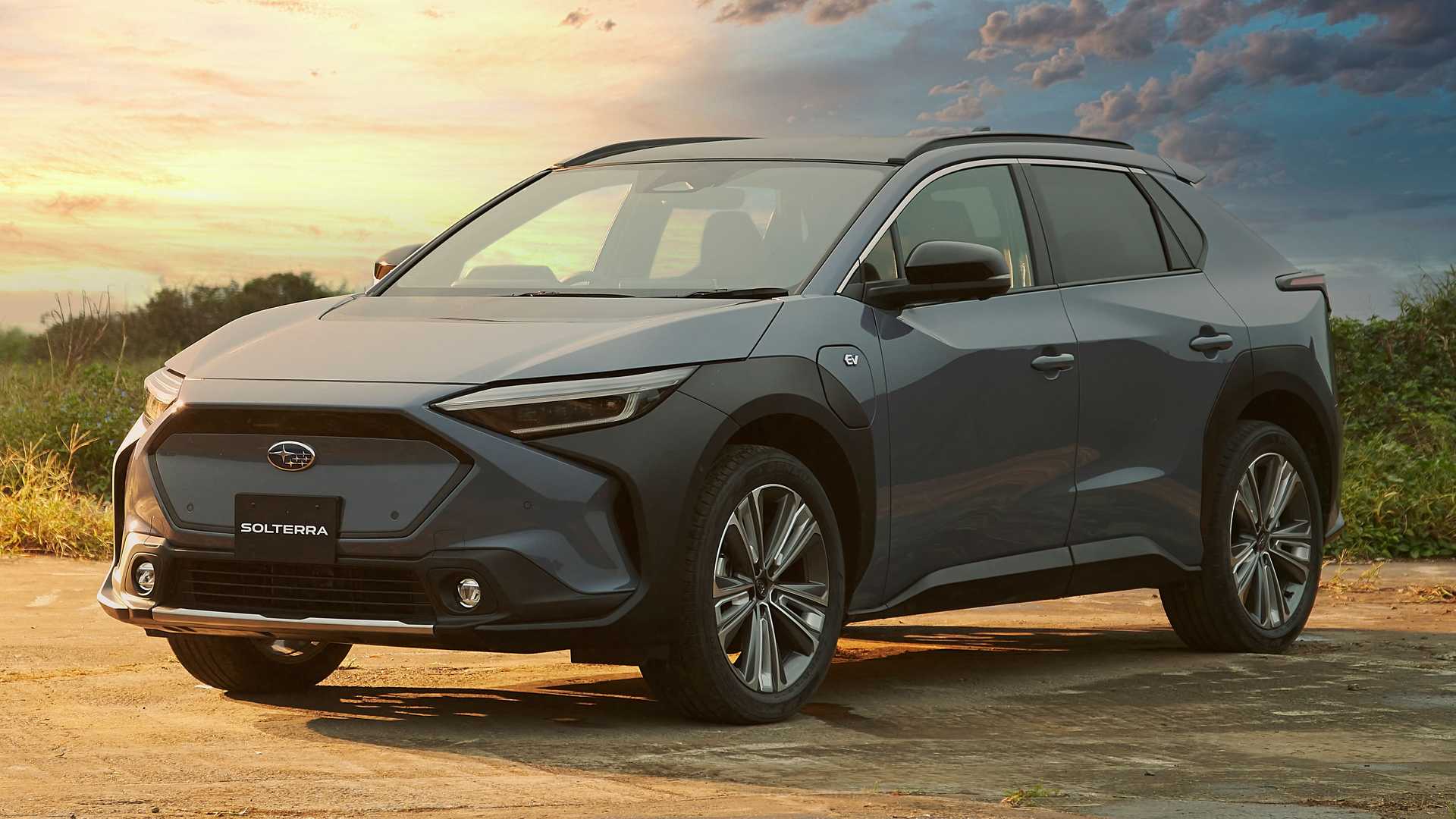Subaru Solterra 4WD: Our first drive
Subaru is now also entering the electric age.
The Japanese are making use of their cooperation with the car giant Toyota, whose bZ4x offers a somewhat different character from the Subaru Solterra.
Subaru has been associated with Toyota for years. For the first electric model, Toyota was primarily responsible for the electric drive package in addition to the e-TNGA platform, and the junior partner contributed the all-wheel drive. Visually, the two brothers hardly differ from each other apart from details on the headlights and radiator grille.
The long wheelbase of 2.85 metres contributes significantly to a spacious interior, which is especially noticeable in the rear, where the generous width is especially beneficial to any middle passenger who will appreciate that there is no gimbal tunnel on the floor. The luggage compartment volume of 452 litres is significantly smaller than that of many combustion engine crossovers, which in this segment can accommodate up to 600 litres in the load compartment.
The large panoramic roof floods the interior with light and, according to Japanese engineers, can capture energy that can generate up to 1800 km of range per year in sunnier countries. Up front, the Subaru Solterra is dominated by a seven-inch instrument cluster and a 12.3-inch touchscreen for central controls.
The concept of the dashboard with multiple viewing angles requires the driver to keep focusing his gaze while driving. The material appearance with mediocre surfaces, which should simply be better in the 60,000 Euro segment, is not convincing. A rotary knob on the wide centre console controls the driving programme, to the right of which is the switch for the driving modes Eco, Normal and Sport. The maximum top speed of 160 km/h, which is set early, is not affected by the driving programme, only the throttle response. The standard consumption of the efficient Subaru Solterra: is 16.1 kWh per 100 kilometres, which corresponds to a range of 466 kilometres. The maximum charging capacity is manageable at 150 kilowatts and a second battery size is not offered either - 71.4 kWh will have to do.
Unlike the Toyota bz4z, the 4.69-metre Solterra is compulsorily four-wheel drive and has paddle shifters on the steering wheel to control the degree of energy recovery during braking in four stages. The driver can also switch to One pedal mode at the touch of a button. Daisuke One, the chief engineer of the Solterra, explains that "Subaru is targeting a customer with a preference for sporty driving, and so there are multiple regeneration levels, a sportier rear suspension and slightly heavier steering than on the Toyota."
Behind the wheel, the Solterra, which costs a minimum of £57,490, proves to be a decidedly comfortable cruiser that benefits from its low centre of gravity and powerful powertrain. However, one should not expect power bursts from the 80 kW / 109 hp electric motors on both the front and rear axles, and the 336 Nm of maximum torque is also rather manageable for an electric crossover of this class weighing over two tonnes. The steering feedback with its small diameter is good and even at high speeds, the body roll is pleasantly contained.
Compared to other electric models, the brake pedal feedback gets good marks. And if need be, the Solterra stays true to the tradition that a Subaru can not only shine on paved roads. It overcomes steep inclines and declines and, thanks to its stiff body, even masters situations in which one or two wheels lose contact with the ground. The finely tuned hill descent assist helps both forward and backward.
